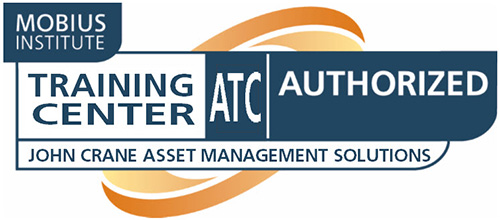Learn to be an effective vibration technician - capable of collecting quality data, and performing basic analysis and data validation - with advanced 3D animations and interactive simulations that make everything easy to understand.
Our VCAT-I ISO Category I course will set you up for success.
The good news is you are in the right place to get further information about our vibration analysis category I training. We will help you understand why vibration analysis is important, you will gain a solid understanding of the fundamentals of vibration analysis, you will learn how to take quality, dependable measurements, and you will begin the process of understanding how to diagnose common faults with vibration analysis.
Once you complete the training, you can take the exam with confidence, and become certified to ISO 18436-2 Category I via the internationally respected Mobius Institute Board of Certification [MIBoC]™. The MIBoC certification is accredited to ISO/IEC 17024 – there is no higher standard. You will join thousands of other Mobius™ certified analysts around the world.
Download Brochure Register Now
This is the place to start your vibration analysis career. You will learn all of the essentials so that you can contribute to the vibration analysis program:
- An introduction to condition monitoring and reliability improvement
- The fundamentals of vibration
- How to collect quality data
- An introduction to vibration analysis and common fault conditions
After this course, vibration analysis will make much more sense. You will learn how to do a good job and why it is so important that you do a good job.
The training and accredited certification follow ISO 18436-2 and ISO/IEC 17024.
Learn More about VCAT-I Training and Certification
VCAT-I candidate profile
This course is intended for the vibration analyst who will:
- Collect vibration data
- Validate that the data is good
- Begin to perform basic analysis
- Use the training and certification as the start of a new and rewarding career as a vibration analyst
VCAT-I fast facts
Duration:
- 30 hours, typically over four days
Format:
- Live public course
- On-site course
- Virtual online course
- Video distance learning online course
Compliance:
- Training and certification: ISO 18436-2
- Certification: ISO 18436-1, ISO/IEC 17024
- Training: ISO 18436-3
Exam:
- Two-hours
- 60 multiple-choice questions
- 70% passing grade
- Can be taken online or in-person at the course
Certification requirements:
- Training course completed
- 6-months of work experience, verified by an independent person
- Pass the exam
- Valid for 5 years
Pre-study:
- Access to the “Learning zone” upon registration and payment
- Complete set of videos covering every topic
- An excellent way to be prepared and get the most from the course
Post-study:
- Continue to access the Learning zone for 6-months after the course
- Continue learning, without charge, on Mobius CONNECT® via www.mobiusconnect.com
What will you gain from taking this course?
There are so many benefits to taking this course. You will learn…
- about condition monitoring, including a summary of the most common technologies
- about reliability improvement
- how vibration analysis plays a key role in reliability improvement
- about how machines work via the supplementary self-study “equipment knowledge” section of the manual
- about the fundamentals of vibration: waveforms, spectra, and simple metrics (overall levels, rms, peak, peak to peak, and crest factor)
- how to take dependable, repeatable, high-quality vibration readings
- about vibration sensors, and how and where to mount them
- the basics of the analysis process, primarily with vibration spectra
- the basics of the key analyzer settings: fmax, resolution, and averaging
- the basics of setting alarm limits
- about the common “failure modes” of machines and how to detect them, including rolling element bearing faults, unbalance, misalignment, looseness, and resonance
A detailed list of training course topics
Here are the main topics covered on the VCAT-I course:
- Maintenance practices
- Reactive, preventive, condition-based, proactive
- How to decide between them
- Condition monitoring
- Why it works
- Ultrasound, infrared, oil analysis, wear particle analysis, and electric motor testing
- Principles of vibration
- Waveforms
- Metrics: overall levels, RMS, Pk, Pk-to-Peak, and crest factor
- Introduction to vibration measurement
- Vibration sensors: displacement, velocity, acceleration
- Vibration units
- Mounting: where and how
- Naming conventions
- Repeatability and quality
- Vibration axes: V, H, A, R, and T
- What are “routes” and how do you create them?
- Detecting and avoiding poor data
- An introduction to the time waveform
- An introduction to the spectrum
- An introduction to forcing frequencies
- A brief introduction to phase
- Signal processing (just the absolute basics)
- A quick tour of your analyzer settings
- Fmax
- Resolution
- Spectral averaging
- Vibration analysis
- The spectrum analysis process
- What is resonance – a quick introduction
- Diagnosing common fault conditions
- Unbalance
- Misalignment
- Rolling element bearing failure
- Looseness
- Resonance
- Setting alarm limits
